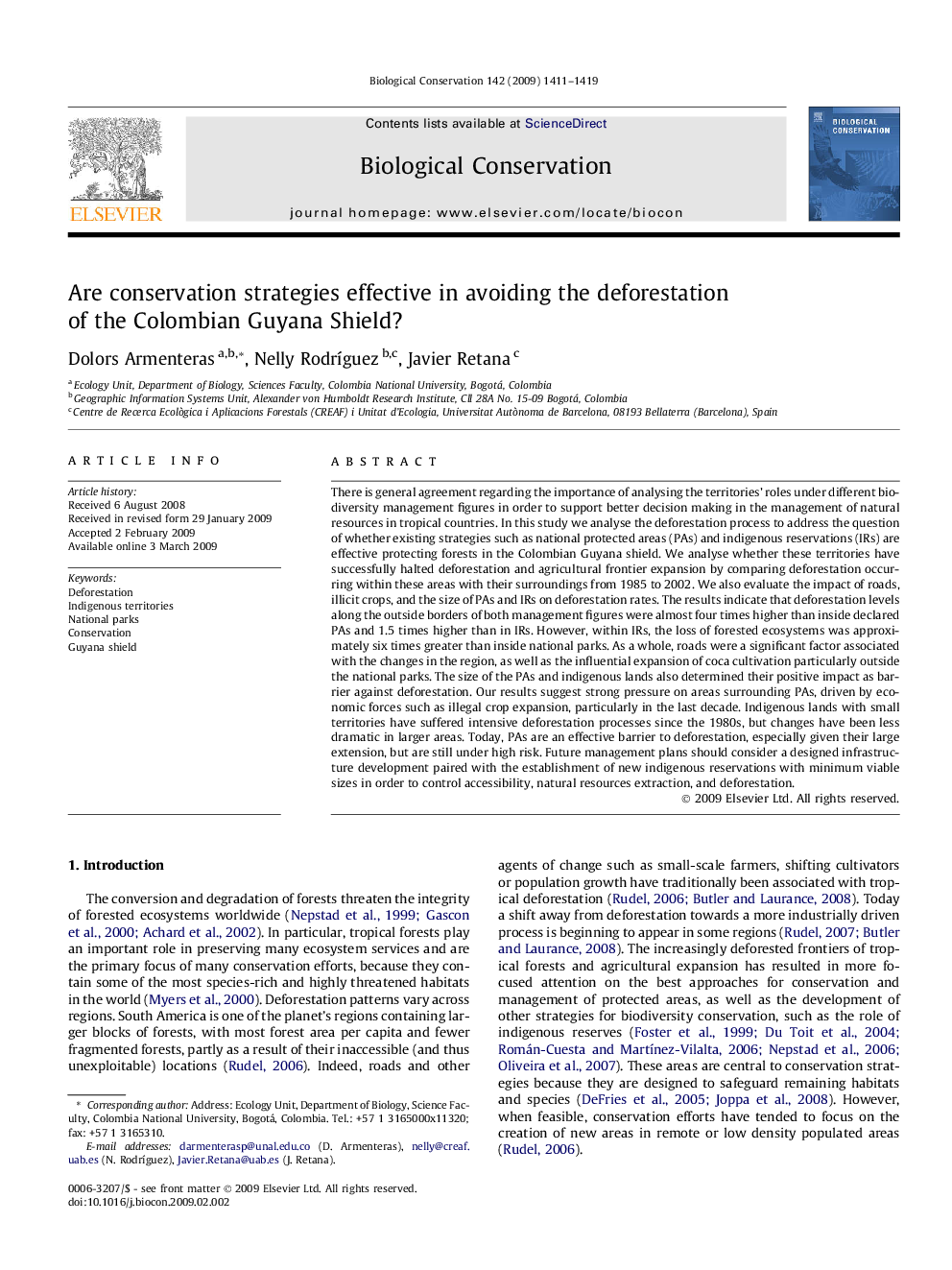| Article ID | Journal | Published Year | Pages | File Type |
|---|---|---|---|---|
| 4386474 | Biological Conservation | 2009 | 9 Pages |
Abstract
There is general agreement regarding the importance of analysing the territories' roles under different biodiversity management figures in order to support better decision making in the management of natural resources in tropical countries. In this study we analyse the deforestation process to address the question of whether existing strategies such as national protected areas (PAs) and indigenous reservations (IRs) are effective protecting forests in the Colombian Guyana shield. We analyse whether these territories have successfully halted deforestation and agricultural frontier expansion by comparing deforestation occurring within these areas with their surroundings from 1985 to 2002. We also evaluate the impact of roads, illicit crops, and the size of PAs and IRs on deforestation rates. The results indicate that deforestation levels along the outside borders of both management figures were almost four times higher than inside declared PAs and 1.5 times higher than in IRs. However, within IRs, the loss of forested ecosystems was approximately six times greater than inside national parks. As a whole, roads were a significant factor associated with the changes in the region, as well as the influential expansion of coca cultivation particularly outside the national parks. The size of the PAs and indigenous lands also determined their positive impact as barrier against deforestation. Our results suggest strong pressure on areas surrounding PAs, driven by economic forces such as illegal crop expansion, particularly in the last decade. Indigenous lands with small territories have suffered intensive deforestation processes since the 1980s, but changes have been less dramatic in larger areas. Today, PAs are an effective barrier to deforestation, especially given their large extension, but are still under high risk. Future management plans should consider a designed infrastructure development paired with the establishment of new indigenous reservations with minimum viable sizes in order to control accessibility, natural resources extraction, and deforestation.
Related Topics
Life Sciences
Agricultural and Biological Sciences
Ecology, Evolution, Behavior and Systematics
Authors
Dolors Armenteras, Nelly RodrÃguez, Javier Retana,
